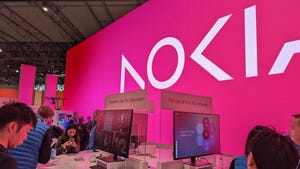June 5, 2024

Due to its large bandwidth, THz spectrum (which, according to its ITU designation, falls between 300 GHz and 3 THz) has been identified as a candidate for 6G technology. That, in turn, is expected to herald the era of 100-Gbps mobile data rates and all the advanced services that come with it.
Similar to millimetre-wave (mmWave), THz spectrum has limited propagation capabilities, which could limit its usefulness to static applications like fixed-wireless access (FWA) and near-field communications (NFC).
However, Softbank recently conducted an outdoor trial that shows it might be possible to use THz spectrum for mobility services, specifically connected cars.
Using 300-GHz spectrum, it was able to maintain a stable connection from a transmitter installed on a pedestrian bridge above a road to a receiver installed on a car travelling at various speeds, maxing out at 30 km/hr.
The stretch of road in question was only 140 metres long, but Softbank said the signal strength was sufficiently strong at that distance that it believes even longer-distance coverage is possible.
"With typical base stations, high-gain sector antennas are installed to construct a wide communication area. These antennas transmit radio waves with a wider pattern in the horizontal plane and a narrower beam in the vertical plane. However, a phenomenon can occur where the receiving signal becomes weaker at a closer point to the macro base station compared to slightly further distances," Softbank explained. "Therefore, for vehicle-oriented terahertz wireless communication, a communication area was constructed with narrower coverage in the horizontal plane and wider coverage in the vertical plane, ensuring stability along the traffic direction of the road."
The key to making it all work is what's known as a cosecant squared beam pattern, a beamforming technique that Softbank said is able to maintain high antenna gain and stable power levels at both the transmitter and the receiver. According to Softbank, the same technique is used in aviation radar to achieve a uniform signal strength when tracking moving objects.
Softbank said cosecant antennas would be too large to be much use at lower frequency bands with their longer wavelengths. But THz wavelengths are much shorter – less than a millimetre towards the upper end of the band – which means the antennas can be smaller.
"SoftBank will continue to test various use cases and accelerate research and development toward achieving the practical application of terahertz wireless technology," Softbank said. "This initiative is aligned with the goal of realising ultra-high-speed wireless communication for the Beyond 5G/6G era and contributing to the growth of the telecommunications industry."
Given how long it's taking for connected vehicle-to-everything (V2X) technology to emerge, it's going to be a while before we're all trundling along in cars boasting THz connectivity. But it is progress nonetheless, and shows that with enough ingenuity, no frequencies are beyond the reach of cellular technology.
About the Author
You May Also Like












_1.jpg?width=300&auto=webp&quality=80&disable=upscale)
